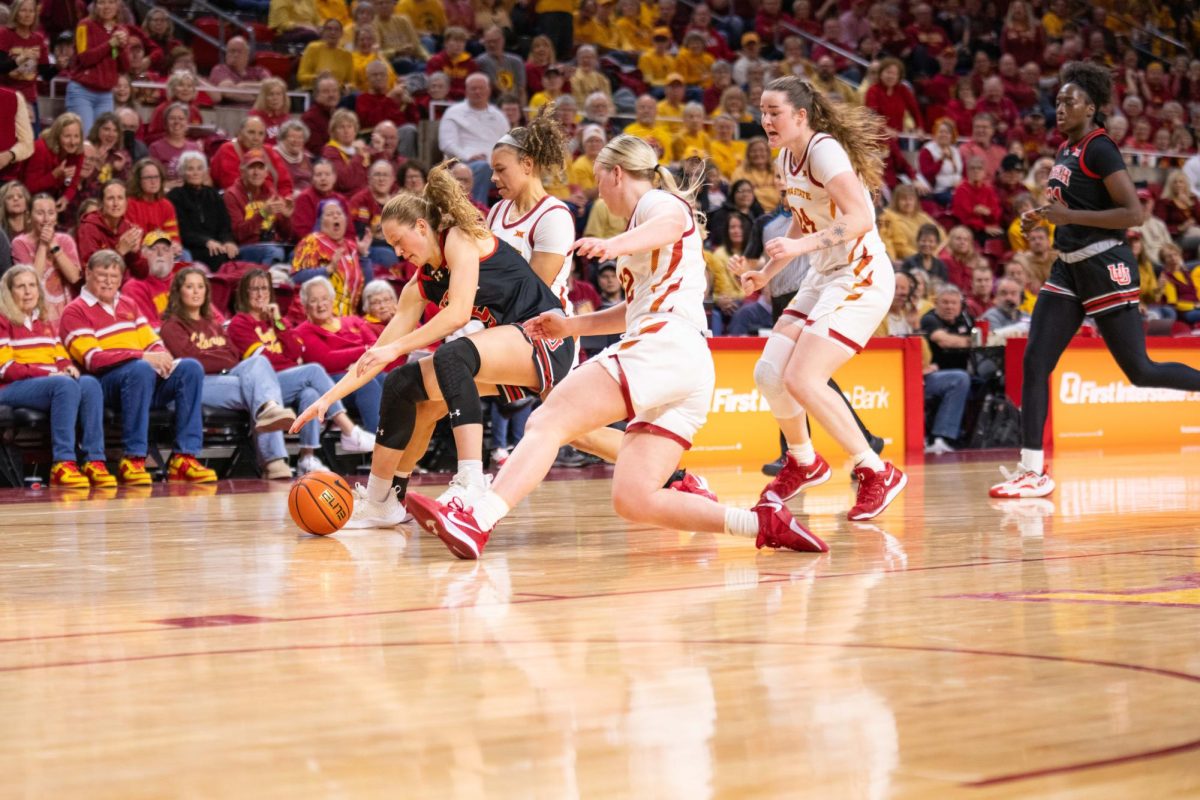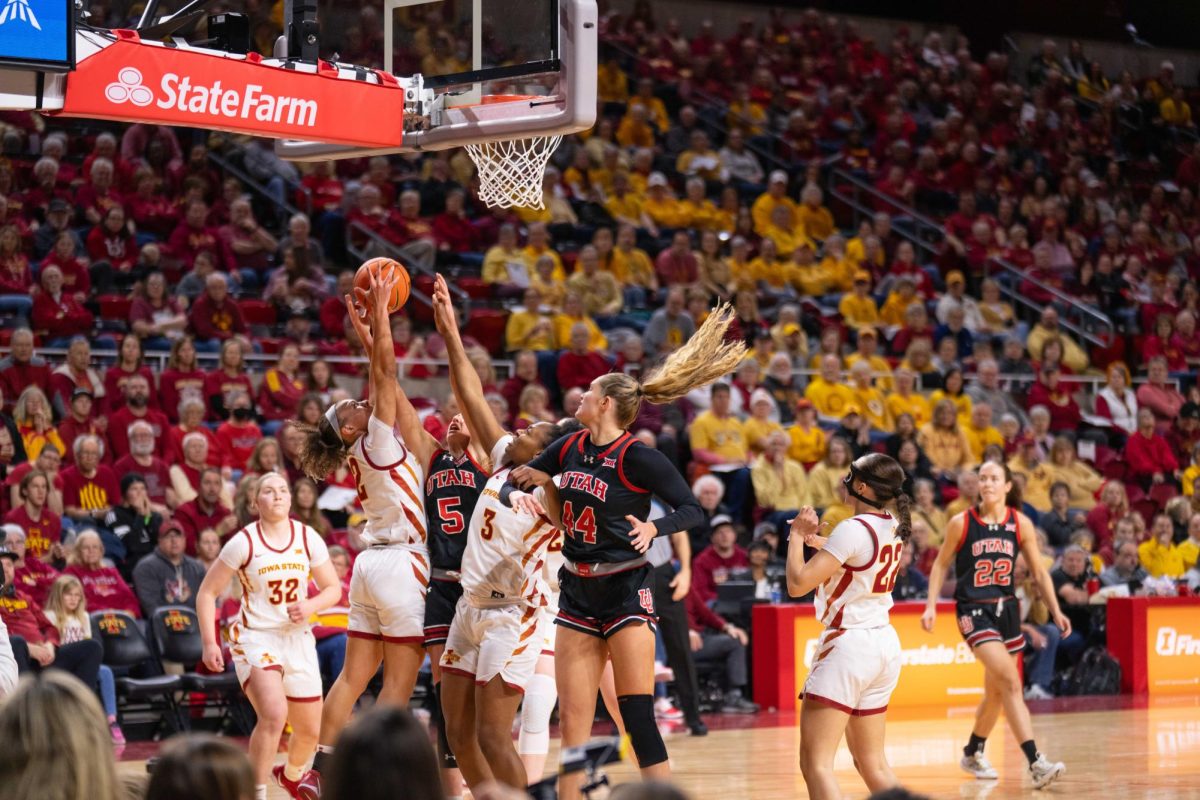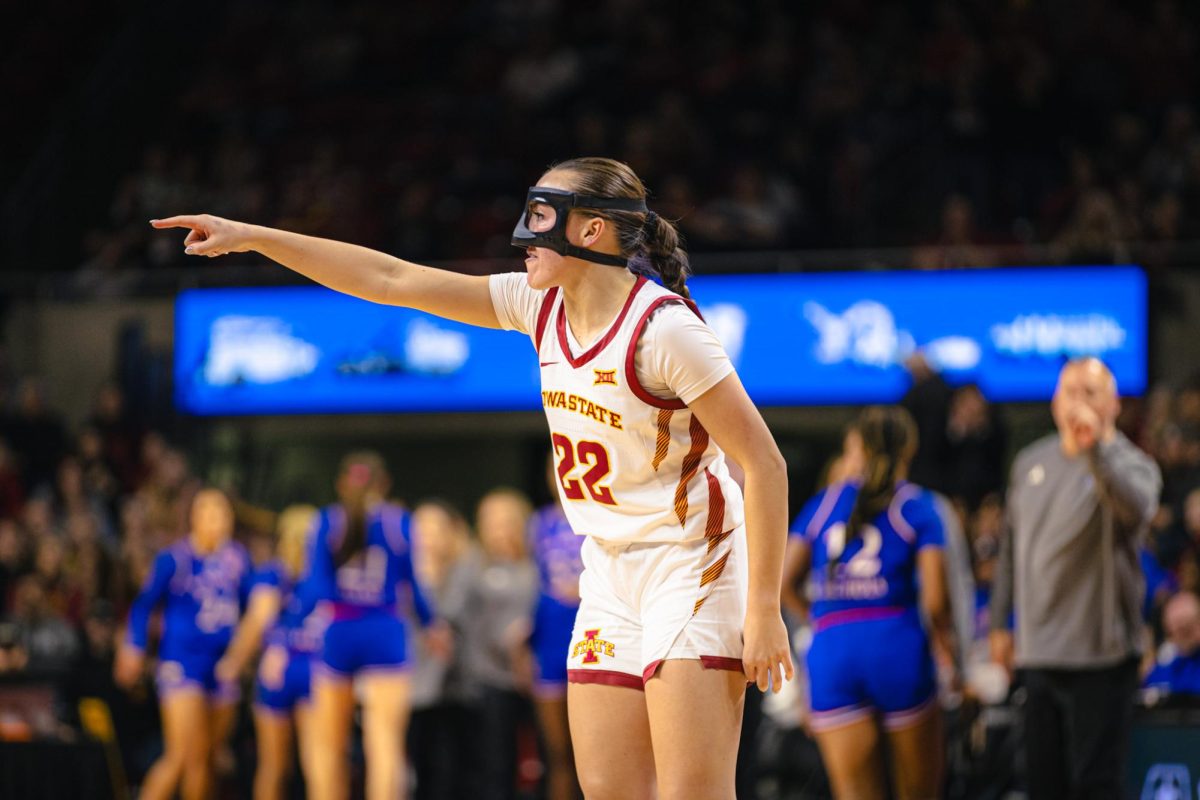In the army now
September 28, 2003
The fifty-foot rappelling tower was starting to shake slightly from the cold wind Saturday afternoon and Chrissy Pettit, senior in advertising, was looking nervously over the edge that she was supposed to have gone over ten minutes ago.
“I can’t do this,” she said repeatedly to the soldiers who were trying to convince her otherwise.
“C’mon, it’s easier than Recruitment Week!” Lt. Col. Marvin Meek, chair and professor of military science, shouted from below.
The descent down the tower is usually made by people more enthusiastic about the idea of sliding four stories on a rope — for example, by soldiers practicing the drops they might someday make into combat zone from a helicopter.
On this Saturday afternoon, though, the tower was just for civilians — a mix of greeks and curious students who signed up at ClubFest were promised a day of seeing the fun side of the military. Before going on the tower, they had spent the previous half hour learning how to tie with a rope the “Swiss seat” that would hold their bodies securely during the rappelling.
They were sleepy-eyed during the knot-tying, prompting the instructor, Cadet Mariah Porter, junior in animal ecology, to ask, “How many of you have a hangover?”
But being on the tower was enough to wake everyone from their drowsiness, and the military personnel patiently assisted the students, some of whom practically needed to be pushed off in order to be convinced the exercise was safe.
“Try doing this while getting shot at!” teased Staff Sgt. Rod Taylor, adjunct instructor of military science, as Pettit continued to hesitate. But eventually she was coaxed into putting her feet against the edge of the tower and leaning backwards in the air with only the pressure of her legs and the rope keeping her body aloft.
Then Pettit’s legs wobbled, either from nervousness or the awkward feeling of sitting on thin air, and she tumbled upside down and shrieked. But as the cadets promised her and everyone else, the rope held her perfectly safe and she reoriented herself and slowly made her way down, laughing the whole way.
“It took a lot of courage to go over the edge,” Meek said to her when she finally hit dirt. Then he added, “If we had a video camera, it could be on ‘America’s Funniest Home Videos.'”
The rappelling tower is just one of the obstacles and tests at Camp Dodge, the largest military training facility in Iowa. Every semester the Reserve Officers Training Corps cadets spend a weekend at the camp to learn basic soldiering and improve their leadership skills.
Today was the first time the training exercise— or an abbreviated version of it — was available for ISU civilian students to try out. For the first time around, the ROTC decided to start small, with just the Delta Zeta sorority and Delta Tau Delta fraternity being invited, as well as students who signed up at ClubFest. A total of 25 students showed up.
“We’re trying to set a precedent and say, ‘We’re opening up this training exercise for outsiders so they can come and get a taste of what it’s like to be in the army,'” said Cadet Aaron Beckman, senior in anthropology.
The weekend was more show-and-tell than exercise, though, with the cadets and officers chatting with the students about their military experience and the particulars of their equipment.
An M1A1 Abrams tank rolled out to the parking lot for the students to see, the heat from the mammoth vehicle’s exhaust enough to warm everyone within five feet on the chilly day. The tank crew described to the awed students the tank’s specifications and capabilities. One officer pointed to a paint scratch as an example of the kind of damage an enemy shell might do to the tank’s thick armor.
Master Sgt. Jasper Edwards, adjunct instructor of military science and a tank company first sergeant, talked about how he had seen the tank perform in combat. He described one incident in which a stream of urine betrayed an enemy soldier’s presence to the tank’s thermal sensors, allowing the tank’s gunner to shoot him.
The students were allowed to climb onto and into the tank, but they were disappointed to learn that the tank crew was not allowed to take them for a demonstration drive.
“You would love it,” Edwards assured them. “I could get 10 of you to become army officers if I could take you on a ride in this.”
The most impressive pieces of hardware for the students, though, were the M16A1 rifles that they were allowed to test out for themselves. The army instructors walked each student through the steps of firing the rifle: loading in the ammo clip, chambering the round, flipping the safety off and then resting the stock firmly against the shoulder and pressing the charging handle of the rifle against the cheekbone so that the eye can see through the tiny sights on the top of the rifle.
“Everybody look through that sight hole and aim at those targets up there, at least three of them, so you get used to it,” Edwards said, pointing to the chalkboard on which example targets hung.
“That same target you see there is the same target you’ll see downrange. All you have to do is shoot it in the black.”
The familiarization with the weapons took about fifteen minutes. Some of the cadets took the rifle apart to show the effort involved in disassembling and cleaning the rifle.
“Anyone have anymore questions?” asked Cadet David Schermerhorn, senior in psychology, as the students left the classroom for the firing range. “There’s no silly questions when you’re dealing with live ammo.”
It took the students a few minutes to put on Kevlar helmets and fit their earplugs, squirm awkwardly in the sand to get into the prone firing position and then position their rifles on the sandbags to get a good sight at the target 25 meters away.
When the signal to fire was given, the students hesitated at first, and then let off shots at controlled intervals; the students had remembered Edwards’ advice to take one or two breaths before each shot so that their breathing wouldn’t cause their aim to sway.
The advice apparently worked and most of the students came away with sheets bearing respectable firing patterns. Megan Christiansen, freshman in dietetics, placed nearly all of her 20 shots so neatly in the three-inch target silhouette — just a dot when seen 25 meters away — that the cadets crowded around to marvel at her target sheet.
“You should really think about joining the army,” Cadet Beckman said to her. “We could really use people like you.”
The day at Camp Dodge wrapped up with a long-awaited meal — Meals Ready to Eat, or MREs. The students found the food, which included chicken tetrazzini, cheese tortellini and pound cake, to be surprisingly good — or at least they were too tired and hungry to complain about it.
While they sat on the grass and waited for chemically-heated water to cook the food, Capt. Dan Runyon, ROTC recruitment officer, lectured to them about the ROTC program and invited them to take part in Military Science 101 and 102. The classes, one-credit semester courses in the fall and spring, cover the same kind of training the students got a glimpse of.
“It’s entirely noncommittal. If you go through them and decide you want to join the ROTC, that’s great,” Runyon said. “If you just want to have a fun time and go on a ski trip with us at the end, that’s fine too.”
Few students seemed concerned with joining the ROTC after the day was over, but it seemed no one left unsatisfied from Camp Dodge.
“I was expecting to have a good time and to learn more about the ROTC, and I did,” said Sam Von Gillern, who is already taking the MS201 course and is planning to minor in military science.
“I just don’t know if it’s for me,” he said.
Pettit, who originally went on the trip for the chance to fire the rifles, said she was impressed with the courtesy and patience of the cadets and officers. But one time on the rappelling tower was enough for her.
“I have so much respect for the people in the army and what they do, but I can’t do that,” she said. “And that’s okay.”






